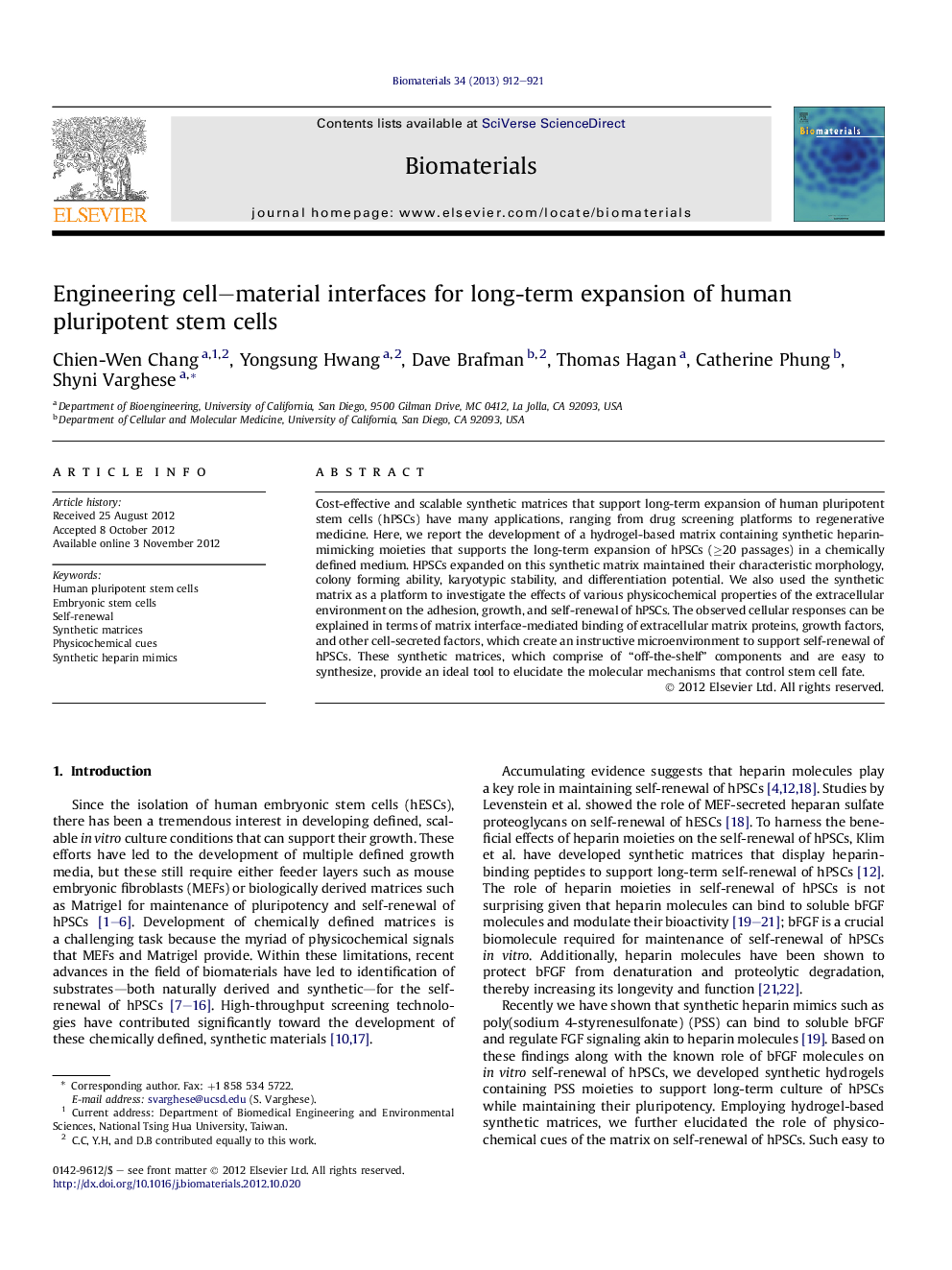| Article ID | Journal | Published Year | Pages | File Type |
|---|---|---|---|---|
| 10229272 | Biomaterials | 2013 | 10 Pages |
Abstract
Cost-effective and scalable synthetic matrices that support long-term expansion of human pluripotent stem cells (hPSCs) have many applications, ranging from drug screening platforms to regenerative medicine. Here, we report the development of a hydrogel-based matrix containing synthetic heparin-mimicking moieties that supports the long-term expansion of hPSCs (â¥20 passages) in a chemically defined medium. HPSCs expanded on this synthetic matrix maintained their characteristic morphology, colony forming ability, karyotypic stability, and differentiation potential. We also used the synthetic matrix as a platform to investigate the effects of various physicochemical properties of the extracellular environment on the adhesion, growth, and self-renewal of hPSCs. The observed cellular responses can be explained in terms of matrix interface-mediated binding of extracellular matrix proteins, growth factors, and other cell-secreted factors, which create an instructive microenvironment to support self-renewal of hPSCs. These synthetic matrices, which comprise of “off-the-shelf” components and are easy to synthesize, provide an ideal tool to elucidate the molecular mechanisms that control stem cell fate.
Related Topics
Physical Sciences and Engineering
Chemical Engineering
Bioengineering
Authors
Chien-Wen Chang, Yongsung Hwang, Dave Brafman, Thomas Hagan, Catherine Phung, Shyni Varghese,
